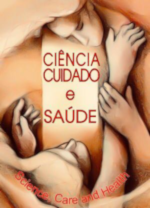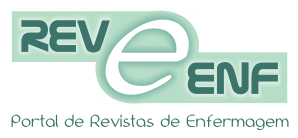Regulation of health technologies in brazil: a documental research
Abstract
Objective: To analyze the main laws in the history of the regulation of the use of healthcare technologies in Brazil. Method: Documentary, exploratory research with a qualitative approach. Data collection took place between April and August 2019 on the National Press website, in Section 1 of the Official Gazette of the Union, with a historical clipping from September 1990 to July 2019, through the phonetic search for the expression ‘healthcare technology’. Initially, 33,669 records were obtained. The final sample consisted of 11 documents, using the content analysis technique. Results: Data were divided into two categories of analysis: “Outline of the healthcare technologies area in the country" and “Dissemination of the use of healthcare technologies”. Until the mid-2000s, guidelines for establishing the use of technologies as part of health policies were prioritized. In the subsequent period, there is an evolution in the planning of supply, production, evaluation, and incorporation of technologies by health services, as well as the development of the Health Industrial Complex. Final considerations: The responsible production and incorporation of healthcare technologies depend directly on investment in research and scientific innovation, and also it is linked to the country's economic and social development.Downloads
References
Ministério da Saúde (BR). Entendendo a incorporação de tecnologias em saúde no SUS: como se envolver. Brasília: Ministério da Saúde; 2016. Disponível em: https://bvsms.saude.gov.br/bvs/publicacoes/entendendo_incorporacao_tecnologias_sus_envolver.pdf.
Brasil. Legislação da saúde. Brasília: Ministério da Saúde;2020. Disponível em: https://www4.planalto.gov.br/legislacao/.
Guimarães R, Noronha J, Elias FTS, Gadelha CAG, Carvalheiro JR, Ribeiro A. Política de ciência, tecnologia e inovação em saúde. Ciênc. Saúde Colet. 2019; 24(3):881-886.doi: 10.1590/1413-81232018243.34652018.
Novaes HMD, Soarez PC. Health technology assessment (HTA) organizations: dimensionsoftheinstitutionalandpolitical framework. Cad. Saúde Pública. 2016; 32(2):e00022315.doi: 10.1590/0102-311X00022315.
Kripka RML, Scheller M, Bonotto DL. Pesquisa documental na pesquisa qualitativa: conceitos e caracterização. Rev. Investig. UNAD. 2015; 14(2):55-73.Disponível em: https://proceedings.ciaiq.org/index.php/ciaiq2015/article/view/252/248.
Bardin L. Análise de Conteúdo. Tradução de Luís Antero Reto, Augusto Pinheiro. Lisboa: Edições 70; 2011.
Moher D, Liberati A, Tetzlaff J, Altman DG. The PRISMA group. Preferredreportingitems for systematic reviews and meta-analyses: the PRISMA statement. PLoS Med. 2009; 6(7): e1000097. doi: 10.1371/journal.pmed.1000097
Barata-Silva C, Hauser-Davis RA, Silva ALO, Moreira JC. Challengestothedrugqualitycontrol in Brazil. Cad. Saúde Colet. 2017; 25(3):362-370.doi: 10.1590/1414-462x201700030075.
Botelho SF, Martins MAP, Reis AMM. Analysisof new drugsregistered in Brazil in viewoftheUnified Health System andthediseaseburden. Ciênc. Saúde Colet. 2018; 23(1):215-28.doi: 10.1590/1413-81232018231.21672015.
Lima MO, Viana GMR. Scientificdivulgation: responsabilityandrelevance. Rev. Pan-amazônica Saúde. 2017; 8(4):7-8.doi: 10.5123/S2176-62232017000400001.
Alves TF, Lima RCGS. Publicinterest in health: contributionsto na ethical-political agenda. Cad. Saúde Colet.2018; 26(3):43-350.doi:10.1590/1414-462x201800030347.
Novaes HMD, Soárez PC. Health Technologies Assessment: origins, development, andcurrentchallenges. N theinternationalandbrazilianscenarios. Panorama internacional e Brasil.Cad. Saúde Pública,2020;36(9):e00006820.doi: 10.1590/0102-311x00006820.
Silva JAA, Costa EA, Luchese G. Unifiedhealth system 30th birthday: healthsurveillance. Ciênc. Saúde colet.2018; 23(6):1953-1961.doi:10.1590/1413-81232018236.04972018.
Huynh-Ba K, Sassi AB. ANVISA: Anintroductionto a new regulatoryagencywithmanychallenges. Aaps Open.2018; 4(1):18-29.Disponível em: https://aapsopen.springeropen.com/articles/10.1186/s41120-018-0029-x.
Delgado JS, Junior ITG. Direito à saúde e (in)eficácia sancionatória da Agência Nacional de Vigilância Sanitária: análise de casos de 2011 a 2015. EJJL. 2018; 19(1):245-270.doi: 10.18593/ejjl.v19i1.16641.
Guimarães R, Noronha RJ, Elias JFTS, Gadelha CAG, Carvalheiro JR, Ribeiro A. Policy for science, technologyandinnovation in health. Ciênc. Saúde colet.2019; 24(3):881-886.doi: 10.1590/1413-81232018243.34652018.
Caetano R, Silva RM, Pedro EM, Oliveira IAG, Biz AN, Santana P.Incorporationof new medicines bytheNationalCommissionforIncorporationof Technologies, 2012 toJune 2016. Ciênc. saúde coletiva [Internet]. 2017[citado em 04 fev 2021]; 22(8):2513-2525. doi:10.1590/1413-81232017228.02002017.
Lima SGG, Brito C, Andrade CJC. Health technology assessment in Brazil – aninternational perspective. Ciênc. Saúde Colet. 2019; 24(5):1709-1722.doi: 10.1590/1413-81232018245.17582017.
Antas Junior RM. A economia política da saúde no território brasileiro e seu complexo industrial: uma análise a partir do conceito de circuito espacial produtivo. Soc. Nat. 2017; 29(2):243-256.doi: 10.14393/SN-v29n2-2017-4.
GadelhaC. O Complexo Econômico-Industrial da Saúde no Brasil hoje. 2020. Associação Brasileira de Saúde Coletiva. Disponível em: https://www.abrasco.org.br/site/noticias/especial-coronavirus/o-complexo-economico-industrial-da-saude-no-brasil-hoje-artigo-de-carlos-gadelha/48144/.
Marge T, Arantes MG, D’Ávila VAL. Policies for fosteringhealthscience, technologyandinnovation in Brazilandthe role ofclinicalresearch. Ciênc. Saúde Coletiva.2017; 22(5):1441-1454.doi: 10.1590/1413-81232017225.33342016.
Rosa CM, Souza PAR, Silva JM. Inovação em saúde e internet das coisas (IoT): Um panorama do desenvolvimento científico e tecnológico.Perspect. em Cienc. da Inf. 2020; 25(3):164-181. doi: 10.1590/1981-5344/3885.
Pissinati PSC, Haddad MCFL. Nurse’sactivities in thedevelopmentof software. Cienc. Cuid. Saúde. 2018; 17(1). doi: 10.1590/0034-7167-2018-0665.
Santos ACS, Volpe CRG, Pinho DLM, Araújo PRS, Silva HTA. Medicationerrorsandincidents in primarycare: integrative review. CiêncCuid Saúde. 2021;20:e42645. doi: 10.4025/cienccuidsaude.v20i0.42645.
Fornasier MO. The applicabilityofthe Internet ofThings (IoT) between fundamental rightstohealthandtoprivacy. Rev. Investig. Const. 2019; 6(2):297-321.doi:10.5380/rinc.v6i2.67592.
Copyright (c) 2022 Ciência, Cuidado e Saúde

This work is licensed under a Creative Commons Attribution-NonCommercial 4.0 International License.





















